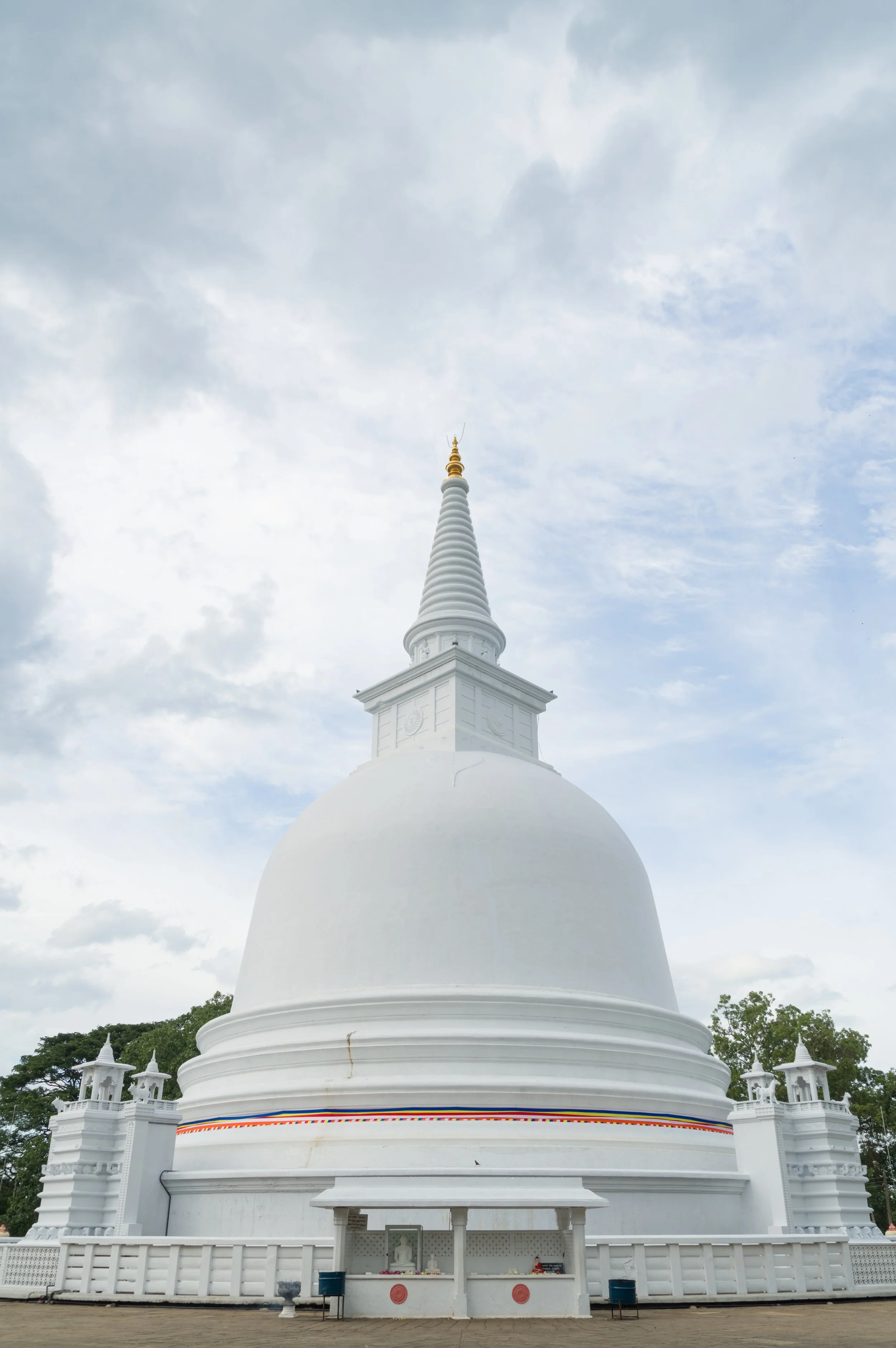Mahiyangana Raja Maha Vihara (S)
At a Glance
As told in the Mahavamsa, this is the site of the Buddha's first visit to Sri Lanka, where he taught the Dharma to a horde of troublesome spirits called yakshas. During this time, one of these yakshas, Saman, attained the stream-enterer, and requested the Buddha to bequeath a relic for support of Dharma practice. The Buddha bestowed several clippings of his hair, which became the foundation of the first stupa on the island of Sri Lanka, encapsulated till this day.
The Story
To learn more about the Mahiyangana Raja Maha Vihara (S), which claims to be the earliest existent Buddhist monument in Sri Lanka, we can turn to a later history, the fifth century Mahavamsa chronicle. In its first chapter, we learn that the Yaksha chieftain Saman achieved stream-entry by listening to the words of the Buddha. This great yaksha then requested a relic from the Buddha, who bequeathed the Lankans a hair relic. Saman, whose followers now honored him as a god.
“The prince of devas, Mahasumana of the Sumanakuta mountain who had attained to the fruit of entering into the path of salvation craved of him who should be worshipped, something to worship. The Conqueror, the (giver of) good to living beings, he who had pure and blue-black locks, passing his hand over his (own) head, bestowed on him a handful of hairs. And he, receiving this in a splendid golden urn, when he had laid the hairs upon a heap of many-coloured gems, seven cubits round, piled up at the place where the Master had sat, covered them over with a thupa of sapphire and worshipped them.”
Thus, the Buddha himself bestowed the first Sinhalese relic of this eon upon a non-human being, authorizing its worship as a support for devotional practice.
The Mahavamsa then relates how after the mahaparinibbana of the Buddha in Kusinagara in India, the arhant Sarabhu Maha Thera (Sariputra), by his miraculous power received, even from the funeral pyre, the collar-bone of the Conqueror and brought it hither (to Lanka), and, with the bhikkhus all around him, he there laid it in that same cetiya, covered it over with golden-coloured stones, and (then he), the worker of miracles, having made the stupa twelve cubits high, departed again from thence.
While At the Main Site
Commemorating what’s said to be the Buddha’s first visit to Sri Lanka, the holy stupa sits on the right bank of the sacred river Mahaveli. According to the Mahavamsa, successive kings enlarged and embellished the stupa out of faith and devotion to the teacher and the Dharma. Such details remind us of the long history of royal patronage of the important island shrines. When we visit today, we can rejoice also in the acts of kindness of all those who treasured and protected these sublime relics.


